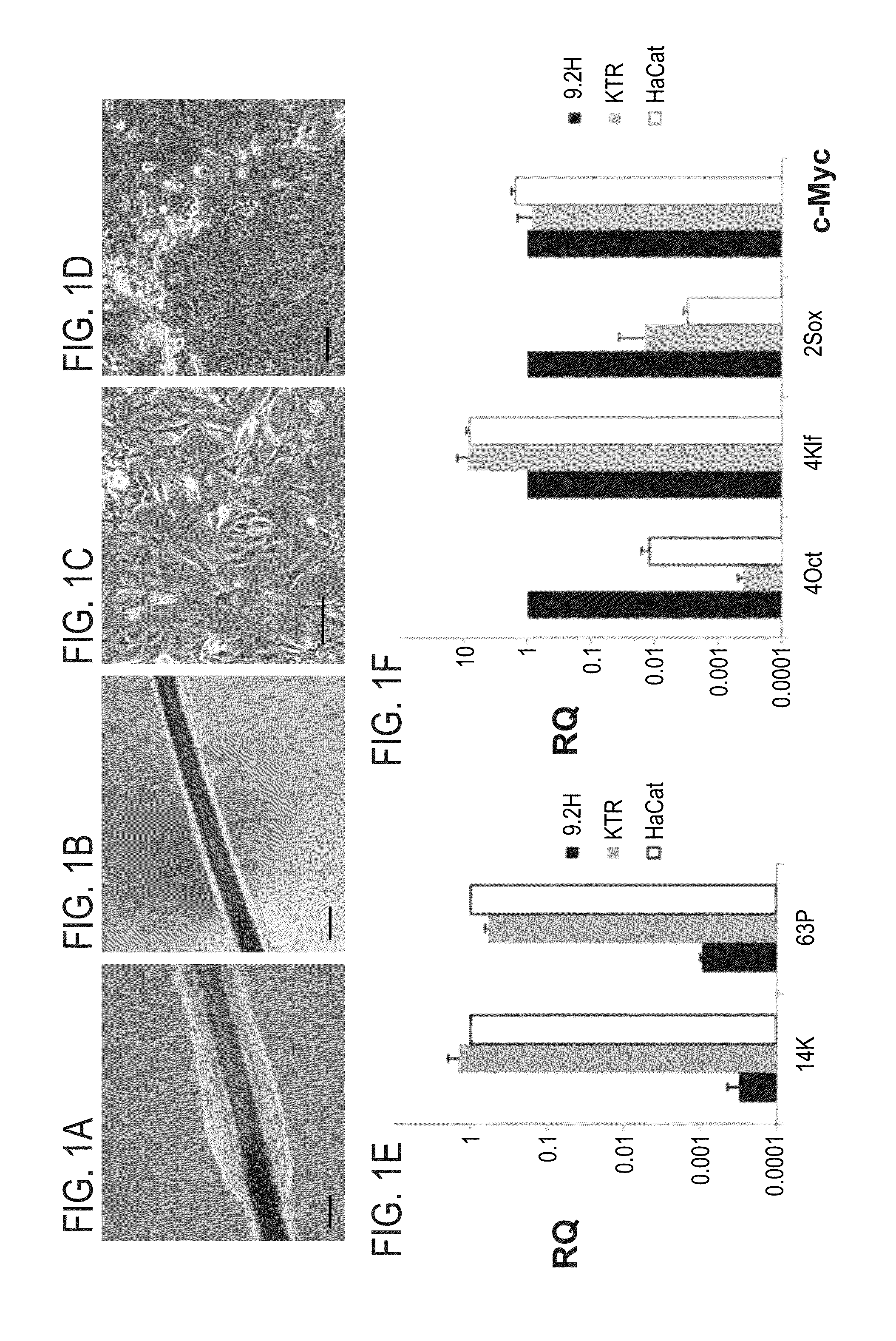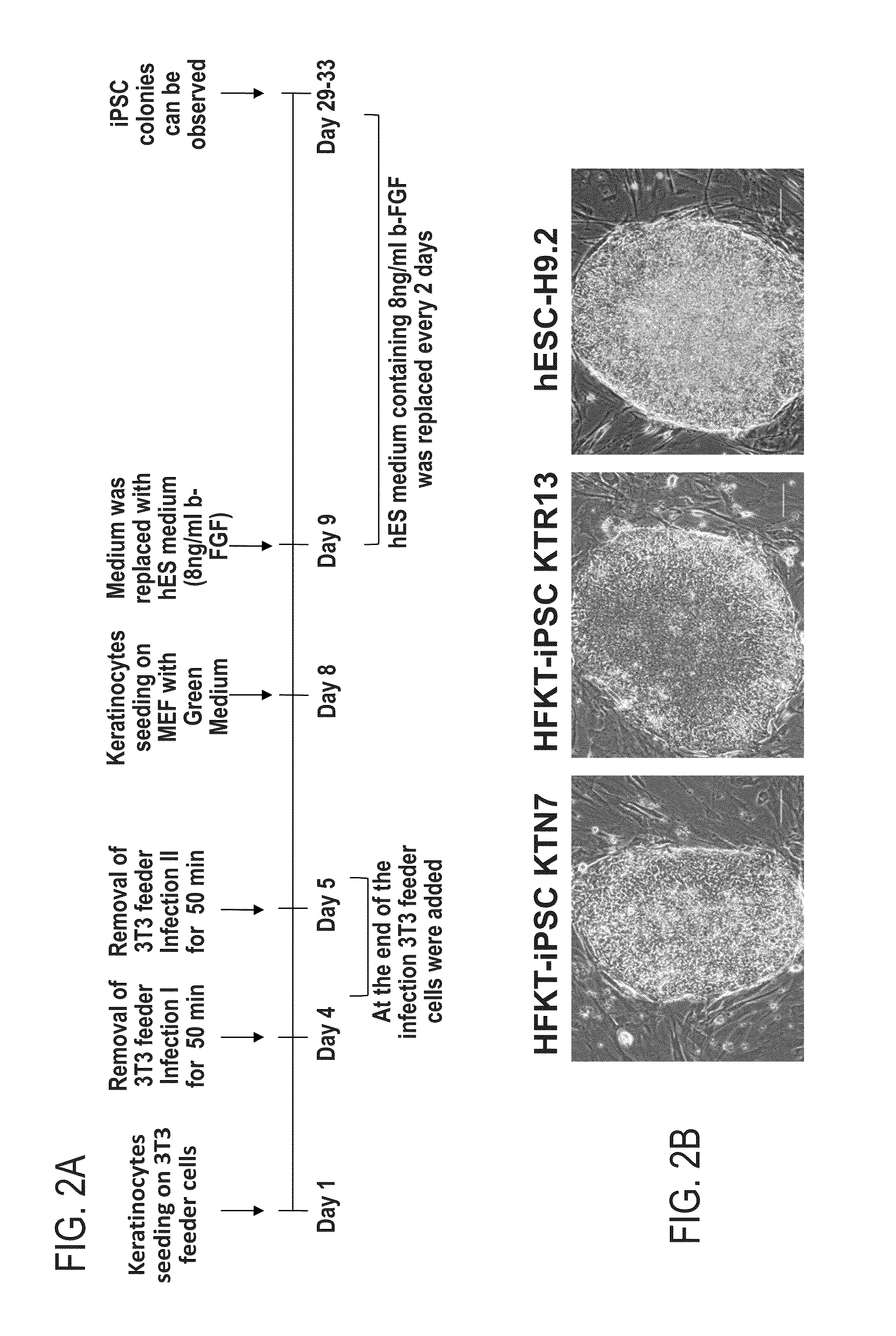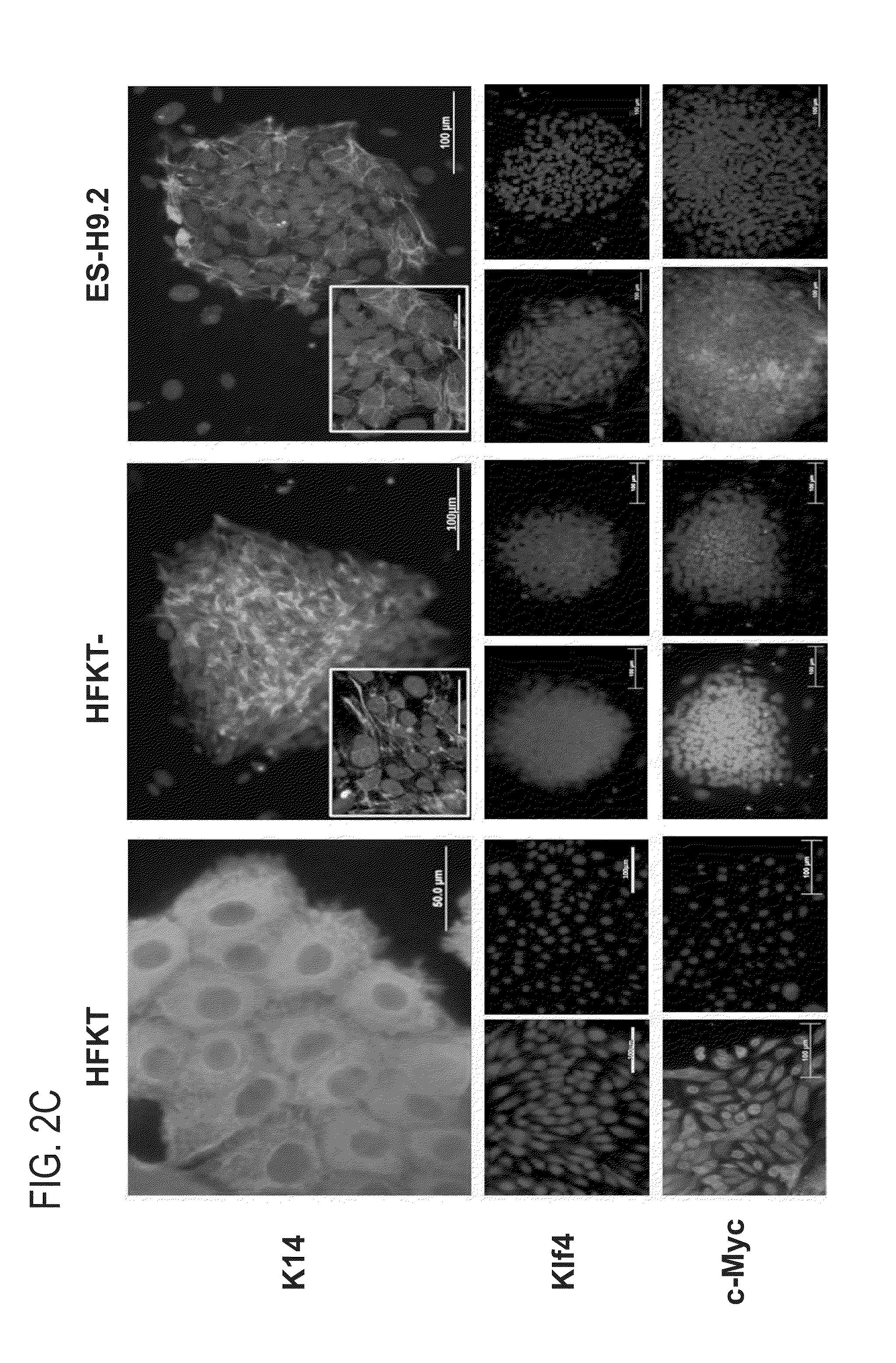Method for generating induced pluripotent stem cells from keratinocytes derived from plucked hair follicles
- Summary
- Abstract
- Description
- Claims
- Application Information
AI Technical Summary
Benefits of technology
Problems solved by technology
Method used
Image
Examples
example 1
The Derivation of Keratinocytes from the ORS of Plucked Hair Follicle and their Characterization
[0168]In order to generate iPSCs from hair, the present inventors followed Aasen et al.'s protocol (Aasen et al. 2008) for generating iPSCs from plucked hair follicles. Plucked hair was cultured on Matrigel-coated dishes supplemented with MEF-conditioned media for at least five days until cells proliferated out of the outer root sheath (ORS), but an insufficient number of viable and proliferative cells could be isolated. The present inventors obtained a single cell suspension of keratinocytes by plucking and selecting at least 10 single hairs with a visible bulb and intact ORS (FIG. 1A), incubating them with DMEM-supplemented with penicillin, streptomycin, HEPES and L-Glu for 24 hr, and then removing the cells from the ORS enzymatically with trypsin-EDTA (FIG. 1B). These isolated keratinocytes were seeded on inactivated 3T3 feeder cells (FIGS. 1C, D) and could be further cultured up to fo...
example 2
Optimization of the Reprogramming Procedure
[0170]With the purpose of developing an efficient HFKT reprogramming protocol, the present inventors used various viral vectors and growth conditions to optimize the reprogramming of common target cells, such as human foreskin fibroblasts (FIFE) and human dermal fibroblasts (HDF). The viral vectors analyzed were the pMX retroviral vectors harboring four (Klf4, Oct3 / 4, Sox2 and c-Myc) or three (Klf4, Oct3 / 4 and Sox2) reprogramming factors (Takahashi et al. 2007; Nakagawa et al. 2008), The pMSCV retroviral vector set modified by Aasen et al. (Aasen et al. 2008) and the humanized version of a single lentiviral STEMCCA vector (SEQ ID NO: 1).
TABLE 5Calibration of post-infection growth-conditionsCellsCellmaintenancesubculturingReprogrammingCell(Fresh / thawGrowthratioEfficiencysourceafter freezing)Viral vectorconditions(post infection)% + SDHFFThaw cellspMX 4FMEF feeder1:60.04% ± 0.03Fresh cells were(OSKM)layernot determinedFibronectin + 1% ± 0.46...
example 3
Induction of Pluripotent Stem Cells from HFKTs, and their Identity Relative to HFKT Parental Cells and hESCs
[0180]The procedure for HFKT reprogramming is illustrated in FIG. 2A. KTN and KTR keratinocytes were derived from plucked hairs of two healthy women, aged 36 and 41, designated “N” and “R”, respectively. Starting with 30,000 keratinocytes which were infected with the STEMCCA vector, ˜5-9 iPSC colonies were isolated in five independent experiments. Importantly, all the colonies that emerged following ˜30 days of incubation were true iPSCs exhibiting morphological features resembling those of hESCs (FIG. 2B). All the iPSC colonies were picked mechanically and were transferred to the MEF feeder-layer for further expansion and analysis. Their karyotypes were analyzed and were found to be normal excluding two clones, one with a lost X chromosome (45, X0) and the other with an unstable karyotype (data not shown).
[0181]Specific characterization of the HFKT-iPSCs, as compared with the...
PUM
| Property | Measurement | Unit |
|---|---|---|
| Temperature | aaaaa | aaaaa |
| Time | aaaaa | aaaaa |
| Time | aaaaa | aaaaa |
Abstract
Description
Claims
Application Information
 Login to View More
Login to View More - Generate Ideas
- Intellectual Property
- Life Sciences
- Materials
- Tech Scout
- Unparalleled Data Quality
- Higher Quality Content
- 60% Fewer Hallucinations
Browse by: Latest US Patents, China's latest patents, Technical Efficacy Thesaurus, Application Domain, Technology Topic, Popular Technical Reports.
© 2025 PatSnap. All rights reserved.Legal|Privacy policy|Modern Slavery Act Transparency Statement|Sitemap|About US| Contact US: help@patsnap.com



